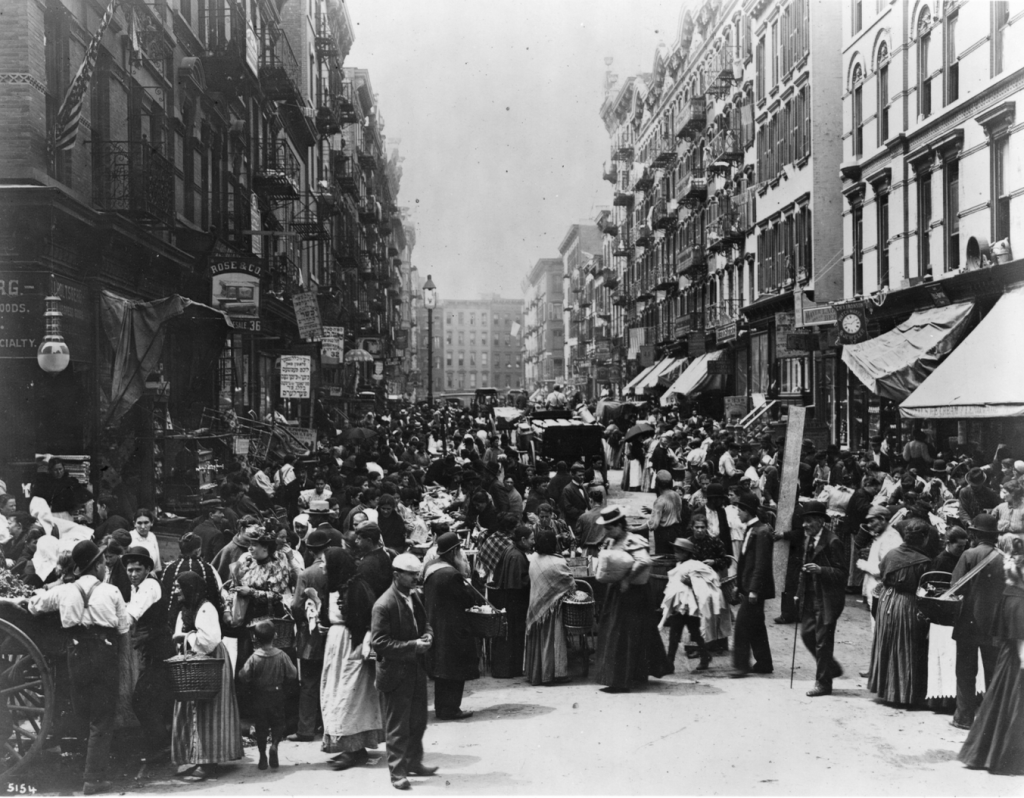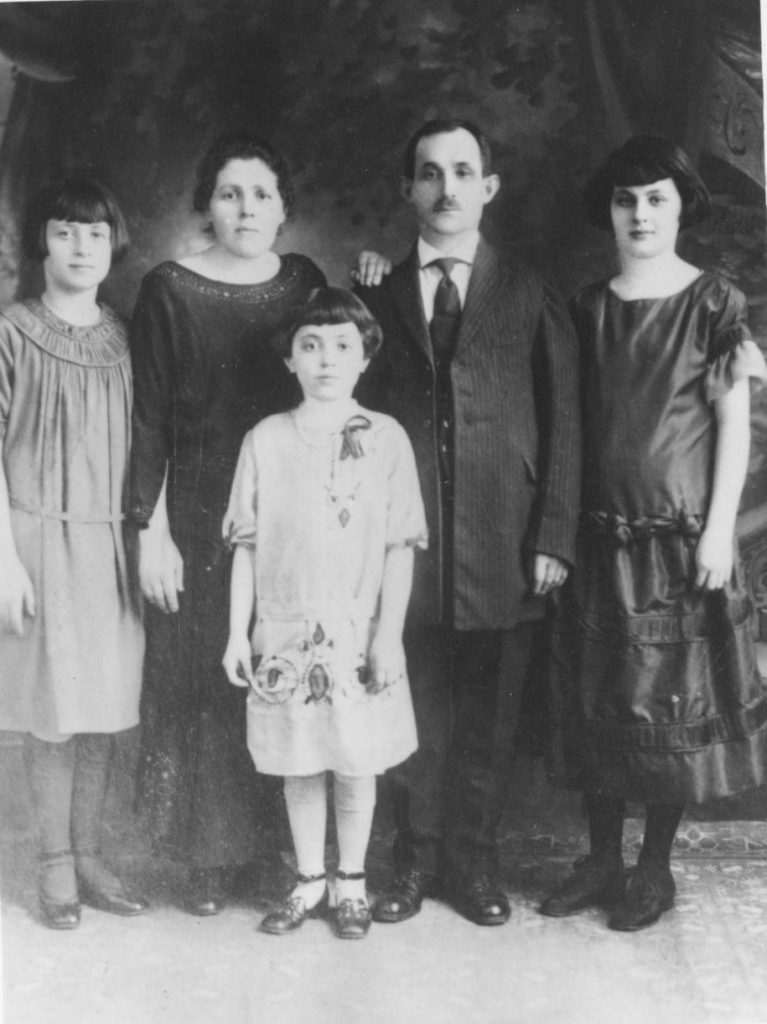
Many Jewish immigrants decided to stay in New York City settling in what is now the Lower East Side. This densely populated area bustled with the vibrant sights and sounds of a community full of life. Pushcart vendors shouted in Yiddish as they wove their way through throngs of people selling their wares, children played ball in streets lined with Kosher shops, and klezmer music – Jewish street folk tunes often played on a fiddle or clarinet – rang out from door stoops. Despite this vibrancy, life on the Lower East Side was harsh. Although America was seen as a refuge from religious persecution and oppressive tyranny and a beacon of hope and freedom, newly arrived Jewish people often had little money and found homes in tenement buildings, cheap low-rise multi-family apartments, often on Cherry or Orchard street. The tenements were cold in the winter and hot in the summer, the apartments commonly had three rooms, and often only 325-square-feet would house up to 10 people.1 Sanitation was also poor, – some tenement buildings had only one outdoor water pump and outhouse for all its inhabitants – and diseases spread easily. In her autobiography Out of the Shadow: A Russian Jewish Girlhood on the Lower East Side, Rose Cohan describes her experiences living in the Lower East Side as a young Jewish girl. She recounts the tenement buildings where she lived, writing that “none of the places were pretty and most of them were dingy.”2 Yet despite the poor conditions, Rose Cohan, her family and thousands of other Jewish immigrants created homes in the tenements.


1. “Lower East Side,” Tenement Museum, 2020, https://www.tenement.org/explore/lower-east-side/.
2. Rose Cohan, Out of the Shadow: A Russian Jewish Girlhood on the Lower East Side, Documents in American Social History (Ithaca, NY: Cornell University Press, 1995), 186.